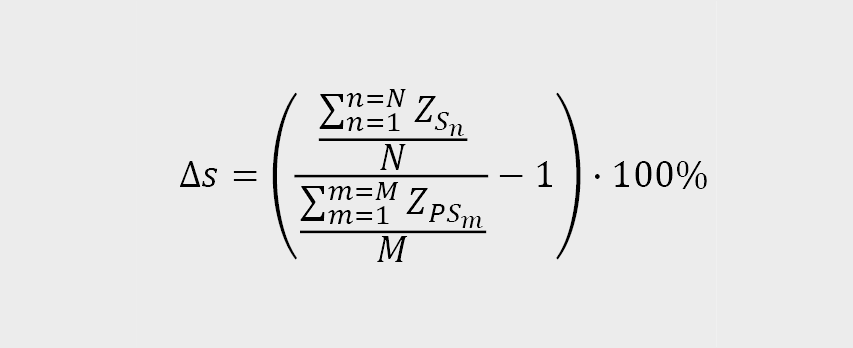New calculation of the capacity fee
The latest amendment to the Capacity Market Act (which came into force on 1 September 2021) finally introduces a preferential method of calculating the capacity fee, long awaited by companies. However, the rules for calculation of the fee are based on completely different assumptions than the relief initially expected.
The original version of the act called for introduction of capacity fee relief based on the value of the electricity cost intensity factor in the activity of companies with the activity codes (PKD) indicated in the act. This is how the relief is calculated for industrial consumers from the charges resulting from the renewable energy sources fee and the cogeneration fee. However, entry into force of this relief required approval of the European Commission, which was not granted.
Instead, a more universal way of calculating the capacity fee was devised, consistent with the primary objective of the entire act, i.e. to ensure stable energy supplies. In addition to the principle of charging a capacity fee for power consumed only during peak hours (which is supposed to encourage shifting consumption from daytime peak periods to the night-time dip between 5 pm and 6 am, or weekends), discounts were introduced in calculation of the capacity fee depending on the difference in the user’s consumption between peak and off-peak hours. Depending on the size of this difference, users will be divided into four categories:
- Category 1—difference between peak and off-peak of less than 5%
- Category 2—difference between peak and off-peak of 5% or more, but less than 10%
- Category 3—difference between peak and off-peak of 10% or more, but less than 15%
- Category 4—difference between peak and off-peak of 15% or more, or no energy consumption during off-peak hours.
The qualifying period for calculating the difference will be 24 hours (a day from 0:00 am to 11:59 pm), but in 2021–2022 it will be considered over a month and in 2023–2024 over 10 calendar days. The difference will be calculated on weekdays, Monday to Friday, excluding public holidays, according to the following formula:

where each symbol means:
∆s—difference between the average electricity consumption in peak hours during the qualification period and the average electricity consumption in off-peak hours on weekdays from Monday to Friday, excluding public holidays, during the qualifying period
n—hour in the peak hours during the qualifying period
N—number of hours during peak hours during the qualifying period
m—hour during off-peak hours on weekdays from Monday to Friday, excluding public holidays, during the qualifying period
M—number of hours during off-peak hours on weekdays from Monday to Friday, excluding public holidays, during the qualifying period
ZSn—volume of electricity drawn from the grid and consumed by the end user during an hour n, expressed in MWh, with accuracy to three decimal places
ZPSm—volume of electricity drawn from the grid and consumed by the end user during an hour m, expressed in MWh, with accuracy to three decimal places.
Therefore, the smaller the difference in energy consumption during peak and off-peak hours, the smaller the capacity charge will be for a given recipient. This is expected to flatten the energy demand curve on a 24-hour basis, and thus contribute to greater stability of the power system and rationalise the amount of power sources needed to provide it. The rate of the capacity fee charged for individual categories of recipients will be as follows:
- For category 1, 17% of the capacity fee
- For category 2, 50% of the capacity fee
- For category 3, 83% of the capacity fee
- For category 4, 100% of the capacity fee.
The new method of calculating the capacity fee will be applied to given recipients in the network:
- High voltage (110 KV and above), from 1 October 2021
- Medium voltage (higher than 1 kV and lower than 110 kV), from 1 January 2022
- Low voltage (up to 1 kV):
- With respect to end-users with contracted capacity greater than 16 kW, excluding end-users billed at a lump-sum as indicated in the act, from 1 January 2025
- For other customers (including lump-sum customers), from 1 January 2028.
In connection with gradual introduction of the capacity fee calculation depending on the consumption profile of each recipient, in theory no recipient is excluded from application of the preferential capacity fee rate.
In practice, segments of energy-intensive industry that were to benefit from reductions in this fee because they were significantly affected by introduction of the capacity fee may not be able to change their production model and organisation to take advantage of the preference. It is definitely worth a try though, as the benefits that can be reaped if successful are tangible. In addition, the more recipients benefit from the preference, the greater part of the costs of maintaining the power market will be transferred to other recipients who did not obtain a preference or obtained a smaller preference.
It will also be interesting to see the development and dissemination of solutions reducing the difference in power consumption and controlling its size for smaller recipients, especially households, in connection with the gradual transition to calculating a capacity fee based on the consumption profile for all recipients.
The method of calculating the difference does not seem to exclude the possibility of applying a preferential capacity fee calculation if the recipients’ off-peak power consumption is higher, irrespective of the size of the difference (in such a situation, the difference calculated in the formula contained in the act will be a negative number, i.e. technically lower than the 5% assumed for category 1). However, this interpretation seems to be contradicted by the desire to promote recipients with a flat consumption profile, implied in the explanatory memorandum to the bill.
On the other hand, if to take advantage of the preference the prevalence of off-peak consumption had to be reduced, this would frustrate at least some of the savings from power consumption during hours when the capacity fee is not levied, and thus negate the purpose of the act in increasing off-peak consumption at the expense of peak consumption. Hopefully the doubt about how to approach the difference in power consumption when off-peak power consumption is higher will be quickly clarified by the drafters of the bill and the market regulator.
Also, the method of calculating the difference does not take into account the cases of imposing on customers power consumption limitations resulting from the regulations or activation of the demand-side response mechanism. The latter case, which is after all one of the instruments of the power market, is particularly puzzling. If the forced change in energy consumption by the recipient were to contribute to a significant increase in the cost of the capacity fee during the period of this change, then such an effect of the recipient’s compliance with the limitations or rules of operation of the capacity market seems undesirable.
It is certain, however, that the new method of calculating the capacity fee requires a review of the industry production and organisation model and, in a longer perspective, the behaviour of other energy users, including households. The idea is to find and exploit the benefits of off-peak energy consumption while flattening the consumption profile of a given recipient at the same time. The impact of the increased cost of energy purchase triggered by the commencement of collection of the capacity fee also remains relevant. It may become an important factor when deciding to invest in self-generation sources, and a stimulus to seek opportunities to improve energy efficiency in companies.
Marek Dolatowski, attorney-at-law, Energy practice, Wardyński & Partners
